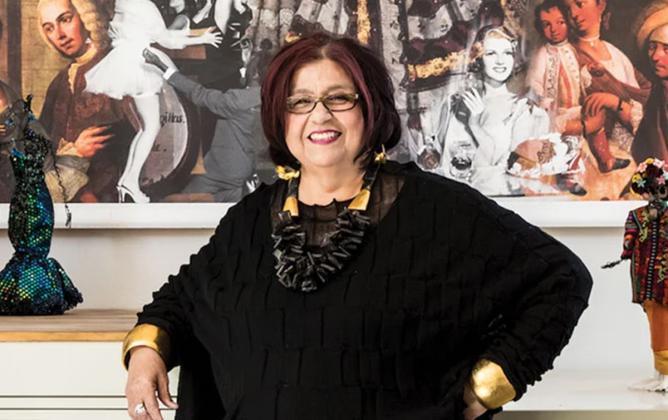
by Tey Marianna Nunn, director of the American Women’s History Initiative, part of the Smithsonian American Women’s History Museum
As a visual artist, writer, cultural historian, activist, and trailblazer, Dr. Amalia Mesa-Bains changed the course of Chicana, Feminist, and American art. While she is best known for her large-scale installations, her visual and written work spans decades and has earned recognition and awards, including the prestigious MacArthur Foundation Fellowship in 1993.
Throughout her multi-media work, she restores memory, ensures a historical narrative, and invites her audience to participate in her visual production. Her prowess in incorporating and honoring women and their stories into the art historical continuum is breathtaking to say the least.
One of Mesa-Bains’s vehicles for expression comes from the tradition of altar making in Chicano and Latino communities. This honorific practice connects individuals with those they wish to remember by gathering and placing photos, candles, and objects holding memories which are in a symbolic space. Mesa-Bains transformed this community-based spiritual and visual practice into installation works for contemporary times.
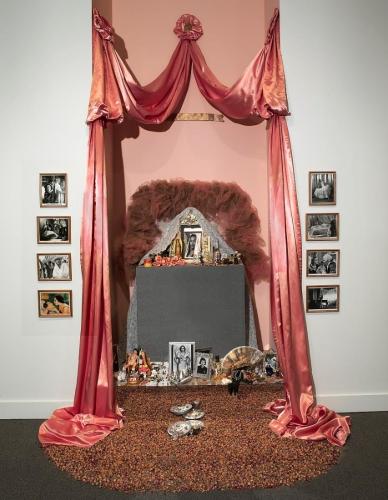
Amalia Mesa-Bains, An Ofrenda for Dolores del Rio, 1984, revised 1991, mixed media installation including plywood, mirrors, fabric, framed photographs, found objects, dried flowers and glitter, Smithsonian American Art Museum, Museum purchase through the Smithsonian Institution Collections Acquisitions Program
The Smithsonian American Art Museum acquired An Ofrenda for Dolores del Rio in 1995. The work which memorializes the famous Mexican actress, Dolores del Rio (1904-1983), is intentionally frothy and feminine with an abundance of fabric, lace, and shiny notions. The installation brings together an assemblage of rose petals, black and white photos, symbolic objects given as offerings, and film canisters and movie cards featuring Del Rio’s famous movies.
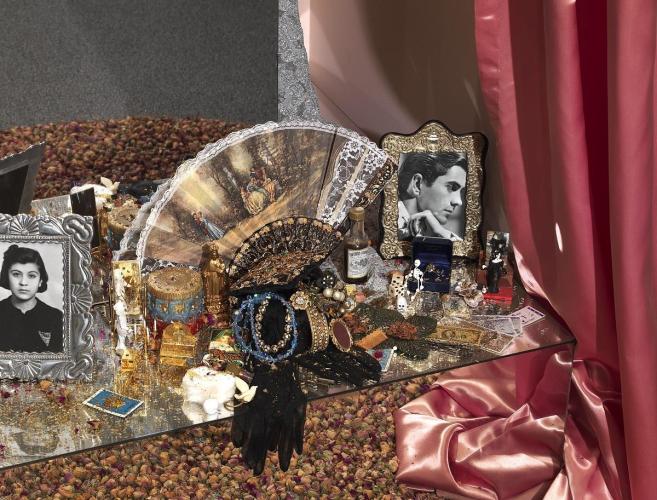
Detail from Amalia Mesa-Bains, An Ofrenda for Dolores Del Rio, 1984, revised 1991, Smithsonian American Art Museum, Museum purchase through the Smithsonian Institution Collections Acquisitions Program. © 1991, Amalia Mesa-Bains
Mesa-Bains builds her ofrenda around a vanity to indicate that this is a woman’s space. The artist calls her practice of highlighting women’s spaces as Domesticana. The Domesticana provides a space for women to identify themselves through narrative, social critique, and ceremonial elements in a male dominated art world. Mirrors help reflect and connect this message.
Through this feminist lens, Mesa- Bains invites the viewer to participate in the artwork with mirrors and the myriad of materials to create a contemplative space where, you can almost imagine Dolores del Rio sitting and reflecting on her own life and history.
Mesa-Bains talks about meeting Dolores del Rio and the process of creating the ofrenda in a video produced by the Smithsonian American Art Museum.
Our America Audio Podcast - Amalia Mesa-Bains, "An Ofrenda for Dolores del Rio"
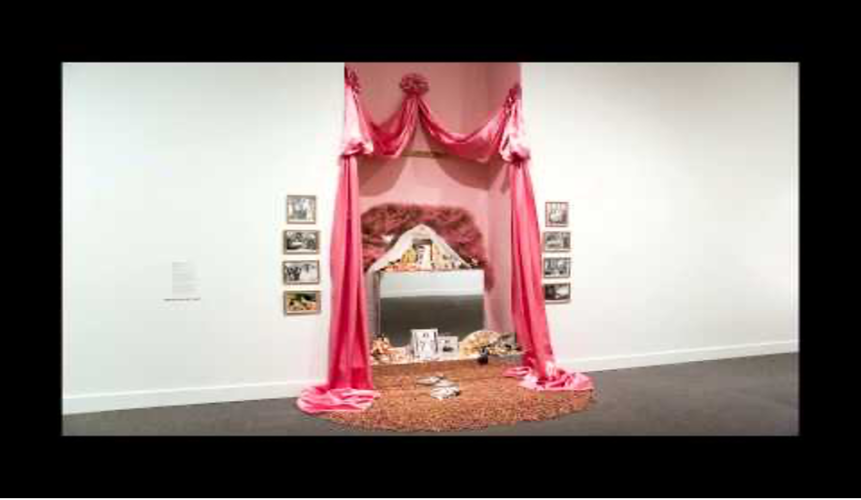
This ofrenda recently traveled to the at the University of California Berkeley Art Museum and Pacific Film Archive where it joined other installations and artwork by Mesa-Bains in a retrospective exhibition and publication titled, Amalia Mesa-Bains: Archaeology of Memory.
Visiting the exhibit was a magical experience. Never had such a breadth of Mesa Bains’s work been shown together in such a grand space. Other ofrendas and installations of all sizes were spread through numerous rooms, and they spanned Mesa-Bains’s entire career. Throughout these works Amalia Mesa-Bains incorporates the stories of numerous women. Especially poignant were carefully placed references to another California artist and commadre of Mesa-Bains, Yolanda López who I wrote about shortly after her death in 2021.
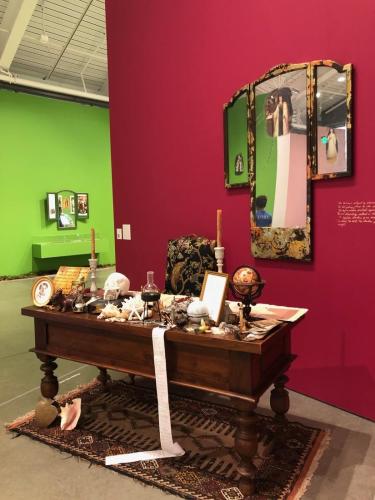
Photograph from the exhibition Amalia Mesa-Bains: Archaeology of Memory at the Berkeley Art Museum and Pacific Film Archive. Photo courtesy of Tey Marianna Nunn.
Amalia Mesa-Bains’ contributions have shifted notions of feminist art and art in general. She has created spaces for Chicanas and others to connect and reflect on who they are, where they come from, and where they are going. As a scholar, Mesa-Bains has included and elevated traditional community practices so that they are now recognized and valued as contemporary art forms. In doing so, she creates a place for serious scholarship and contemplation.
Related Posts
Dr. Tey Marianna Nunn is the Director of the Smithsonian American Women’s History Initiative, part of the new Smithsonian American Women’s History.